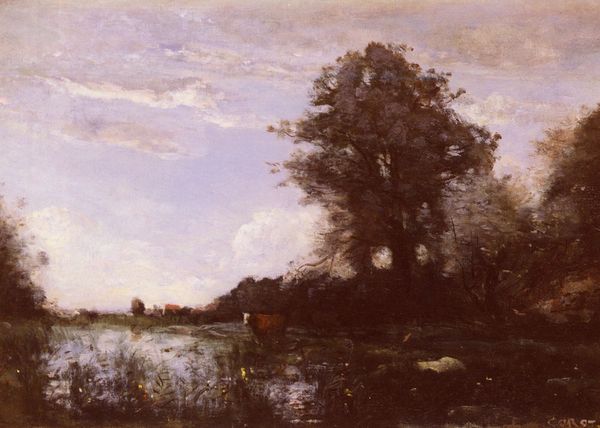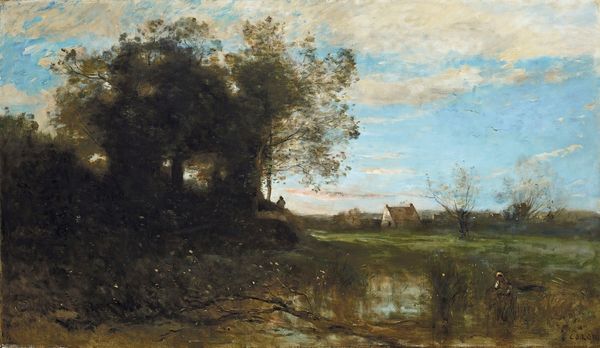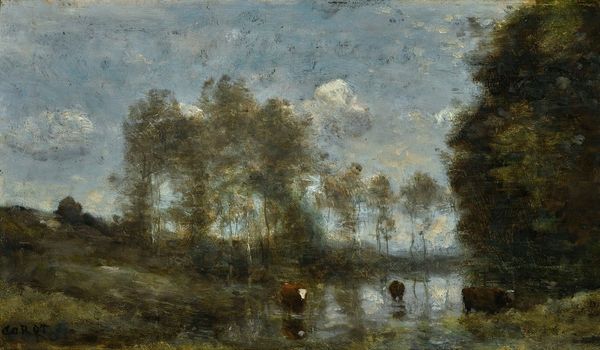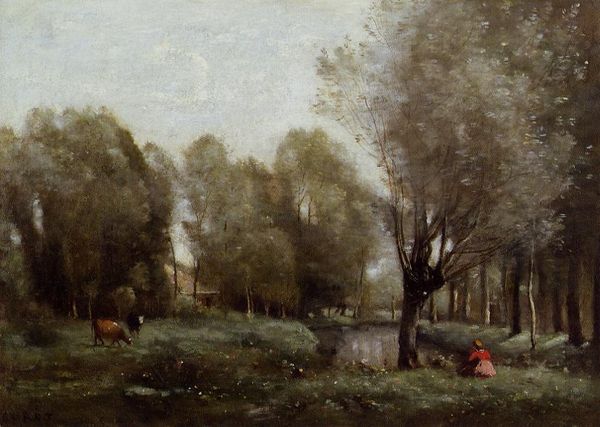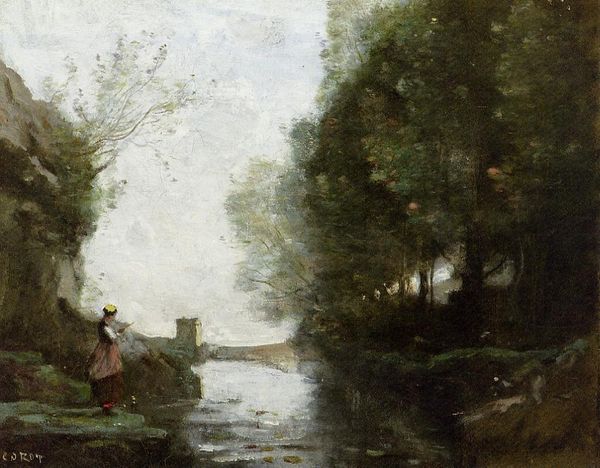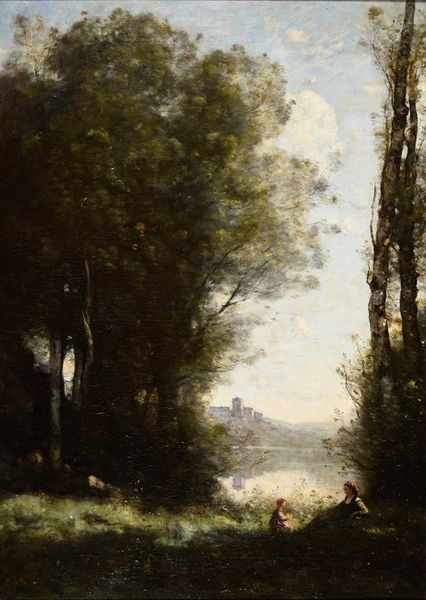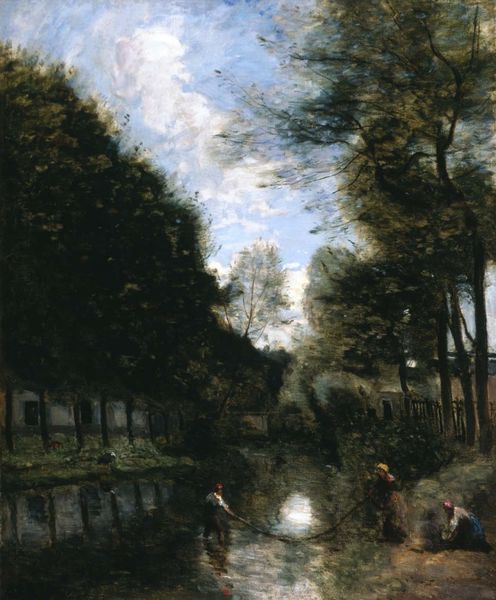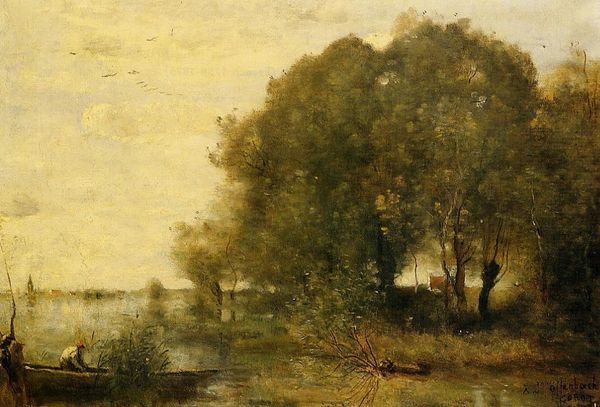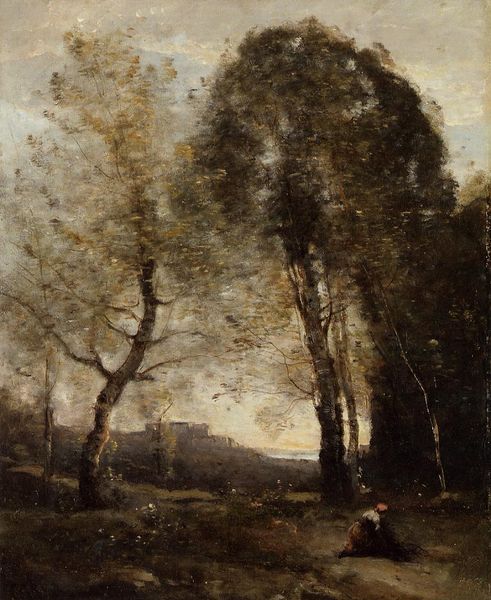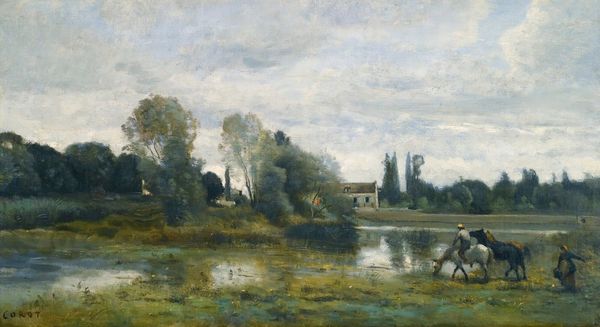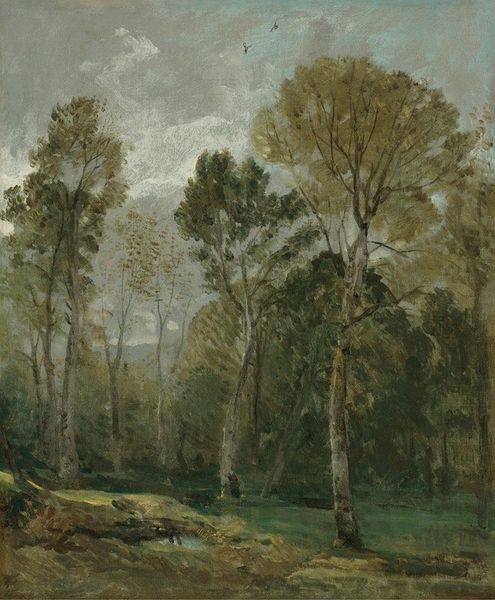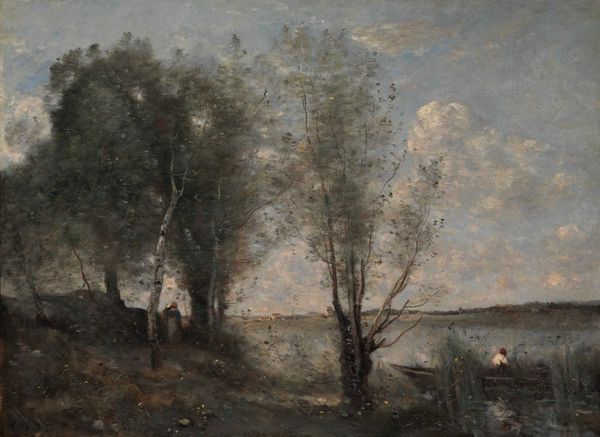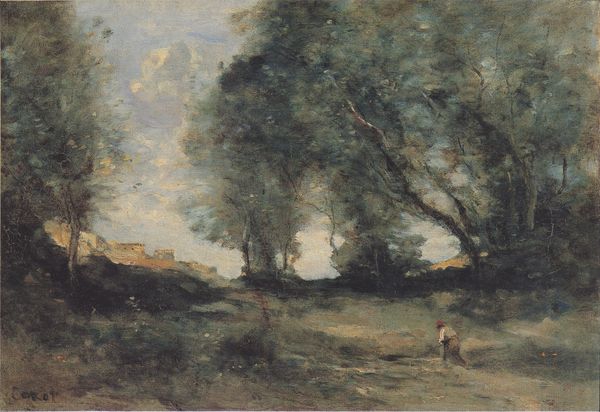
Copyright: Public domain
Curator: Camille Corot painted "Canal in Picardi" in 1871, and the work now resides at the Toledo Museum of Art. The oil painting shows a muted landscape alongside a narrow waterway. Editor: My first thought? It’s terribly…quiet. Like stepping into a faded dream. Everything's muted, soft. And look at the trees! They seem to be whispering secrets to each other. Curator: That muted quality is characteristic of Corot's later style. "Canal in Picardi" reveals an interesting intersection of Romanticism and Impressionism, shifting away from Realism which had been the trend. Note how the figures blend with the landscape; they seem to almost disappear into the earth. Consider what this commentary means for laborers, rural communities, and those whose contributions are systematically rendered invisible. Editor: I love how he captured the light reflecting off the water – that silvery shimmer. You can almost feel the cool dampness in the air. The human figures, well, they are just blurs, really—hints more than depictions. Are they picking crops, maybe? I wonder about their lives. Do they find beauty here? I do! Curator: That "blurriness", as you call it, disrupts the conventional male gaze that defined depictions of laborers in the time. Rather than seeing them objectified, in this painting they are allowed to be. Furthermore, their ambiguous activities force us to question assumptions about what labor looks like, and what value it has. Editor: Hmm. It makes you wonder what stories those trees could tell. Did Corot paint this on site? It feels so alive, so immediate, like a fleeting moment captured in time. You can almost smell the earthiness. I want to wander there. Curator: He was one of the early practitioners of plein-air painting, working outdoors. What appears spontaneous and impressionistic often involved careful observation of nature. Studying Corot helps us question what constitutes 'progress' or artistic innovation, as his methods show continuity between older traditions and avant-garde practices. Editor: Well, regardless of all that fancy talk, it just plain makes my soul feel a little calmer. Like a secret, quiet place where I could go to escape. I'm happy. Curator: Indeed, reflecting on it has me pondering how to better center marginalized perspectives in my curatorial approach.
Comments
No comments
Be the first to comment and join the conversation on the ultimate creative platform.
